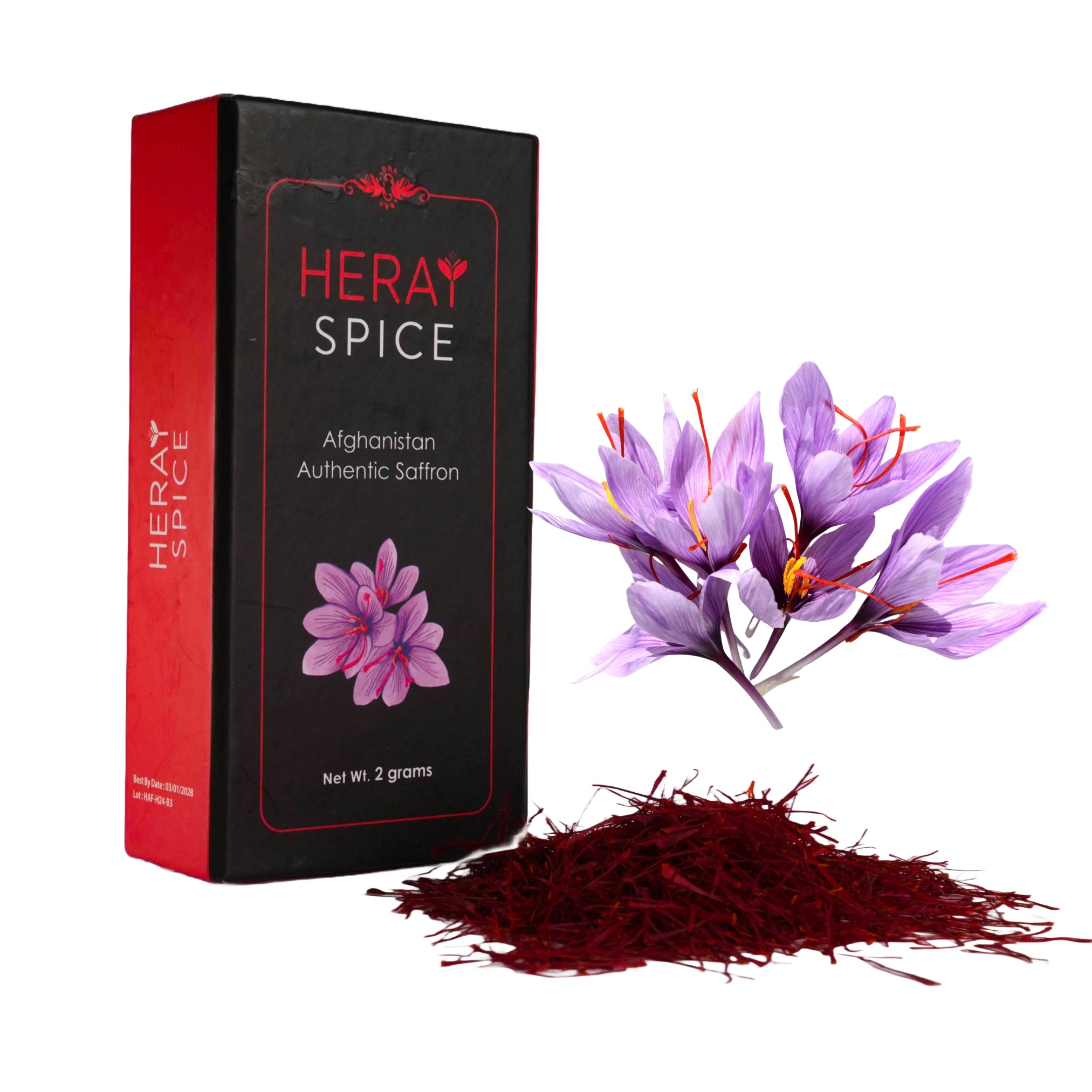Water Test for Saffron Purity
Put 2-3 strands of saffron in a cup of water. If it starts to lose its color immediately, then understand that it is fake saffron. Real saffron takes some time to leave its color. Most of herbs (including saffron) will bloom in water (hot water is preffered) after at least 10-30 minutes.
In other words, add a few strands of saffron to warm water, it may take 15 minutes to 30 minutes to release yellow color in water. However, if your saffron loses its color within minutes and water turns red or releases no color at all then it is most probably fake.

Identify saffron by Color
Saffron threads are naturally red at the top and slightly yellow at the base. The deepest red color indicates the highest quality saffron, as this part contains the most flavor, aroma, and beneficial compounds.
A simple test can help you check authenticity:
Place saffron threads in warm water. Real saffron will slowly release a golden-red hue into the water while the threads themselves remain red for at least 5–10 hours.
• If the strands lose their color quickly and turn pale or white (resembling corn silk), it is a sign of fake saffron.
Why does this happen?
Fake saffron is often made from safflower petals or corn silk that has been dyed with artificial coloring. When placed in water, the dye dissolves rapidly, leaving behind colorless threads.
Real saffron, such as Heray Saffron from Afghanistan, naturally retains its red pigment while releasing its golden essence gradually—proving its purity and quality.
Bonus tip:
Real saffron strands have a deep red color with a slight orange at the tips. Avoid saffron that looks too bright yellow or pale.

hOW TO Identify SAFFRON by Taste?
Taste is another powerful test:
Chew one or two saffron strands, if it tastes sweet, then it may be fake saffron. Real saffron has a bitter taste with a slight sweet taste. If it lacks bitterness or is too sweet, it may be fake.
Real saffron has a bitter, earthy flavor with a slightly floral or hay-like note.
Fake saffron often tastes sweet and metalic because it has been artificially flavored or is simply a different plant dyed to look like saffron.
Saffron is one of the world’s most valuable spices, which is why it is often adulterated with cheaper substitutes like safflower or corn silk dyed with food coloring.

Real Saffron Doesn't Dissolve. Or at at least up to 10 hours
Whether you use real saffron in milk, use it in pulao or use it in any gravy, it never dissolves. Its threads always look the same, red strands. If you see the threads are dissolving quickly, that is the biggest sing of you having fake saffron.

How to identify saffron by Fragrance or smell?
Identify Real Saffron by Smell.
Real saffron has a pleasant strong smell, it smells like honey, grass and floral whereas fake saffron may have a sweet fragrance with a faint chemical smell. Some fake saffron has very little or no aroma, as it uses chemicals, some fake saffron smells like tabbacoo or chemicals.

Identifying saffron with Texture & Price
Real saffron threads tend to remain intact when rubbed between fingers whereas fake ones will fall apart.
Saffron is one of the most high-end spices and it is pretty expensive so if it comes cheap then its most likely not genuine at all.








